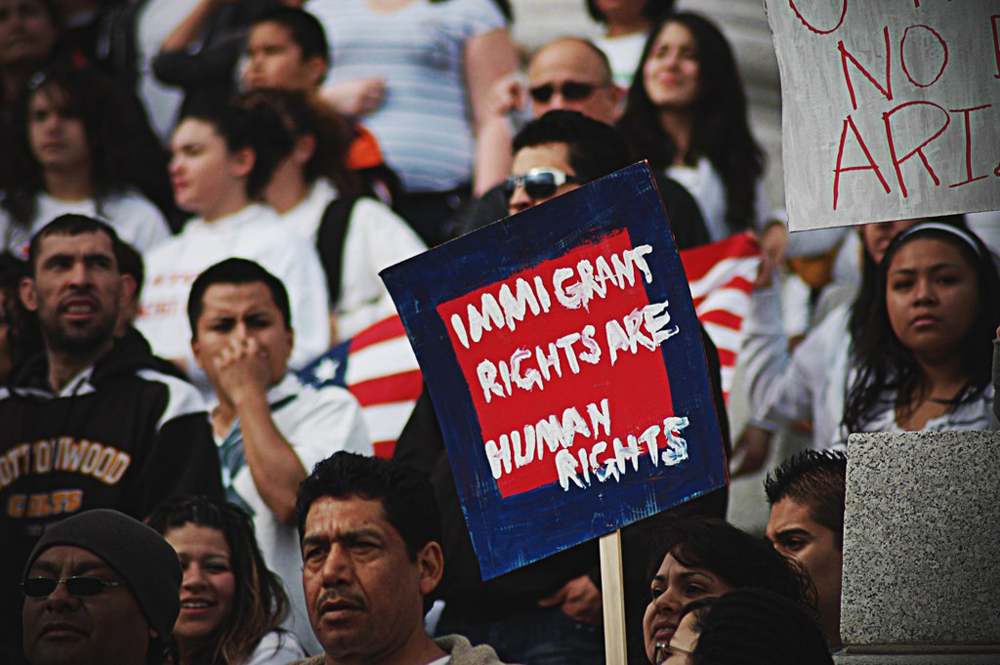Since the war in Ukraine broke out on February 24th, 2022, the Western-based press has given great attention to the humanitarian crisis involving the civilian population of that country. As Russian forces advanced westward, a massive contingent of Ukrainians moved to Poland and other European Union countries, and countless images showed the warm welcome these refugees received in Poland. At that moment, another action by the Poles also drew attention: refugees coming also from India, Nigeria, Brazil, Syria etc. faced major challenges to get a permission to enter Poland and from there to their countries of origin. This situation takes us back to 2105, when there was a severe refugee crisis in Syria. Several European countries refused to take in the refugees, and in many cases, people were beaten and confined in concentration camps, as in Greece. Images of disregard for human life were also seen on the island of Lampedusa, in Italy, when people from Libya and other African nations were barred or left to drown in the Mediterranean Sea.
The drama of the refugee crisis is one of the biggest problems facing humanity. People leave their countries not only because of the destruction caused by wars, but also because of ethnic and religious persecution, actions of armed criminal groups, and, above all, to escape from unemployment, misery, and hunger. In other analyzes here at the Latino Observatory, we addressed the problem of immigration of Latin Americans on the Mexican-US border, where hundreds of thousands of people from Mexico, Guatemala, El Salvador, and Honduras are trying to obtain asylum.
Recently, the issue of immigration has once again been highlighted in the media. On one side are record numbers of arrests at the southern border. According to
Reuters, due to a new wave of migrants, US border officers detained 210,000 migrants trying to cross Mexico's border last March, up 24% from the same month in 2021, when 169,000 migrants were caught at the border, as discussed in our
analysis on April 9th.
On the other hand, we have news of an increase in the migration of refugees fleeing the war in Ukraine, but these people are not finding it challenging to enter US territory. According to the
AFP, while Latinos wait in camps on the Mexican side to seek refuge, Ukrainians receive advantaged treatment from immigration authorities. “Thousands of Ukrainians have since flown to Tijuana to cross the land border to the United States, easier than getting the visa required to fly direct.” Faced with the challenge to have a prior visa to enter the US through airports, many people fly to Tijuana and then enter the United States. However, even if they are arrested for crossing the border without their documents, they are quickly released. Also, according to AFP: “Volunteers in Tijuana and the neighboring US town of San Ysidro say that, on average, new arrivals wait just two or three days before crossing, using an entrance available only to them.”
According to
The Washington Post on April 19th, “Many, if not most, Ukrainians have been released into the United States via humanitarian parole, which allows people to stay temporarily, and they continued arriving this month, though updated figures were not available. The Biden administration responded to the influx Monday by announcing that it would extend the eligibility of Ukrainians for “temporary protected status,” allowing them to stay here for 18 months and apply for work permits, if they arrived by April 11.”
This situation sparked some protests from Latino immigrants who are also going through challenging conditions in their countries and are looking for a new life in the United States, especially because of the violence sponsored by criminal groups. In specific communities in northern Mexico, Guatemala, El Salvador, and Honduras, for instance, homicide rates are higher than in countries with declared civil wars. Take the situation in Donbas, Ukraine: from 2014 to 2021, about 14,000 deaths were recorded due to the war. In El Salvador alone, in the same period,
24,698 murders were recorded. It is worth noting that Ukraine has a population of 44 million, while the small Central American country has only 6.5 million people.
The privileged treatment of Ukrainians can be seen in two ways. From one perspective, it can be comprehended as an act of aid from an ally of the Ukrainian government facing the consequences of invading a foreign country. In theory, it would be a humanitarian compensation to a friendly people. It is worth remembering that the United States are the head of NATO, whose expansion towards the Russian border was one of the supposed reasons for Russian military intervention in Ukraine. Additionally, the United States is at the forefront of sanctions imposed on the government of Vladimir Putin and supports the delivery of weapons to the government of Kyiv.
From another perspective, we can identify the racism of American society, which since the 19th century has created restrictions on immigration, especially for the so-called “colored” races. At first, they restricted the immigration of Catholics from southern Europe, and subsequently, the immigration of Slavs. Further on, the immigration of Asians, Muslims, Indians, Mexicans etc. The central concern of US elites was to maintain the country's ethnic homogeneity, in the case of people of “Caucasian” origin. Markedly racist immigration laws were replaced by the
Immigration and Nationality Act of 1965, signed into law by President Lyndon Johnson during massive demonstrations in defense of the civil rights of minorities, especially African-Americans. By law, at least from a formal point of view, restrictions related to race on the admission of immigrants were abolished.
It is interesting to note that as much as there are restrictive measures, the population of immigrants in the country, especially Latinos, is changing the racial and ethnic landscape in the United States. It is worth remembering that this group accounts for 20% of the population and has a higher fertility rate than the others. In addition, while 210,000 people from Latin America are being detained at the southern border in March 2022 alone, it is worth asking: how many others were unable to enter and live in the country illegally?
It is important to note that discretionary treatment by immigration authorities is the rule, not the exception. Despite the speeches with a more humanist tone from the leaders of the Democratic Party, the images of guards mounted on horses repressing Haitian immigrants show the difficulty of uniting intentions and actions. In contrast, the facilitation of the entry of Ukrainians of Slavic ethnic origin, but Caucasian heritage shows that the racial issue is still a knotty problem in American society, and that laws alone are not enough to reverse a deeply rooted cultural posture.
 mtviewmirror.com
mtviewmirror.com











